Chabówka 2022-01-19
Steam locomotive Ty2.
The steam locomotive BR52 (Ty2) was a steam locomotive developed by the Germans during the Second World War. The locomotive was produced in the period 1942 - 1945. The locomotive received the axis system 1'E, that is 1-5-0 (oOOOOO), and the Polish designation is a small letter "y".
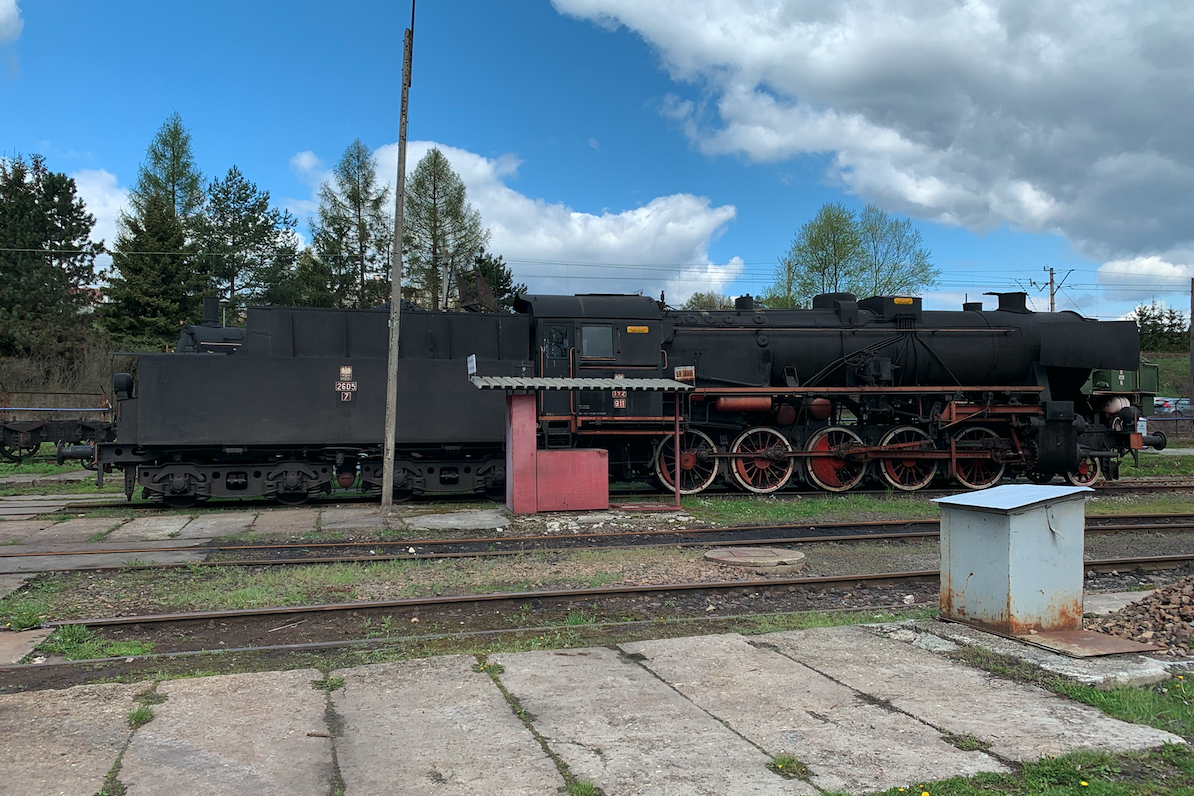
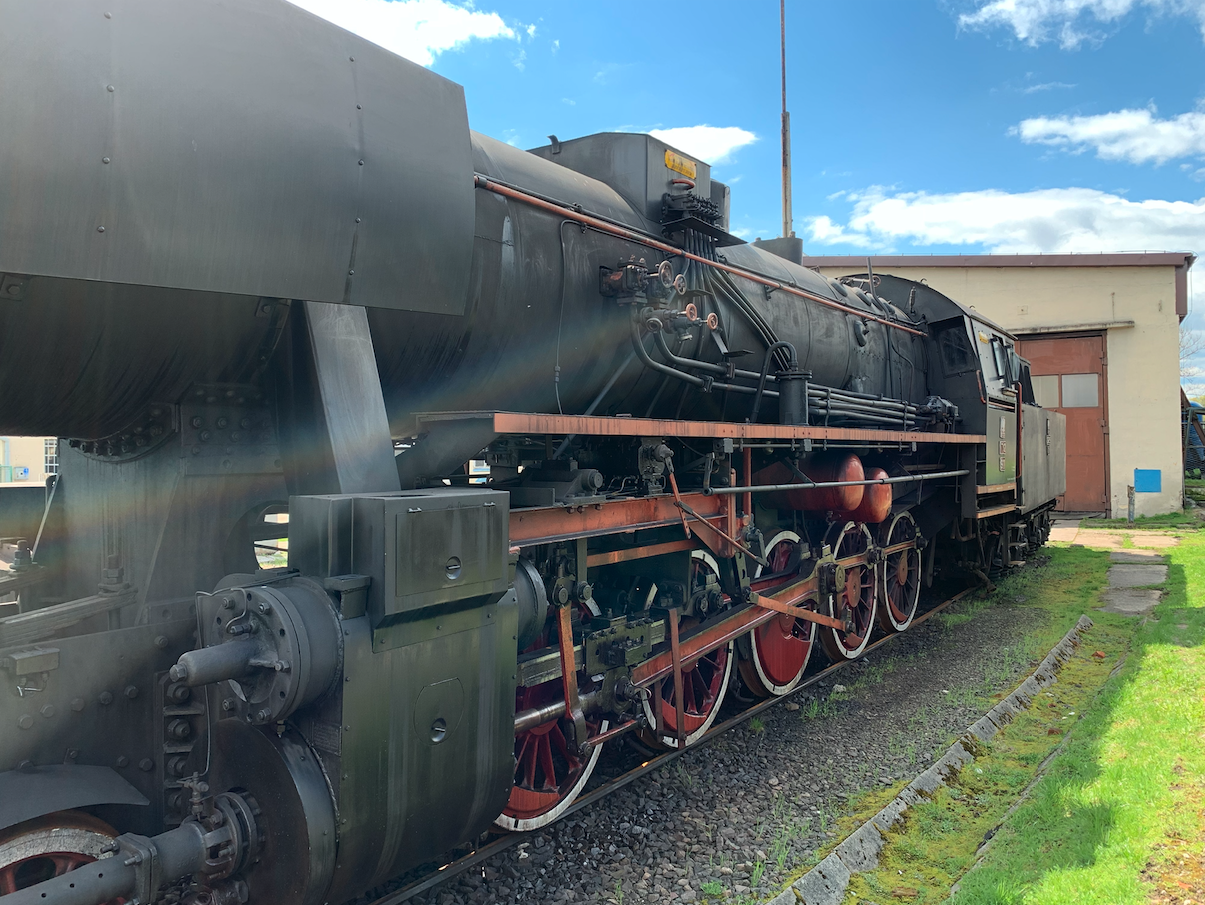
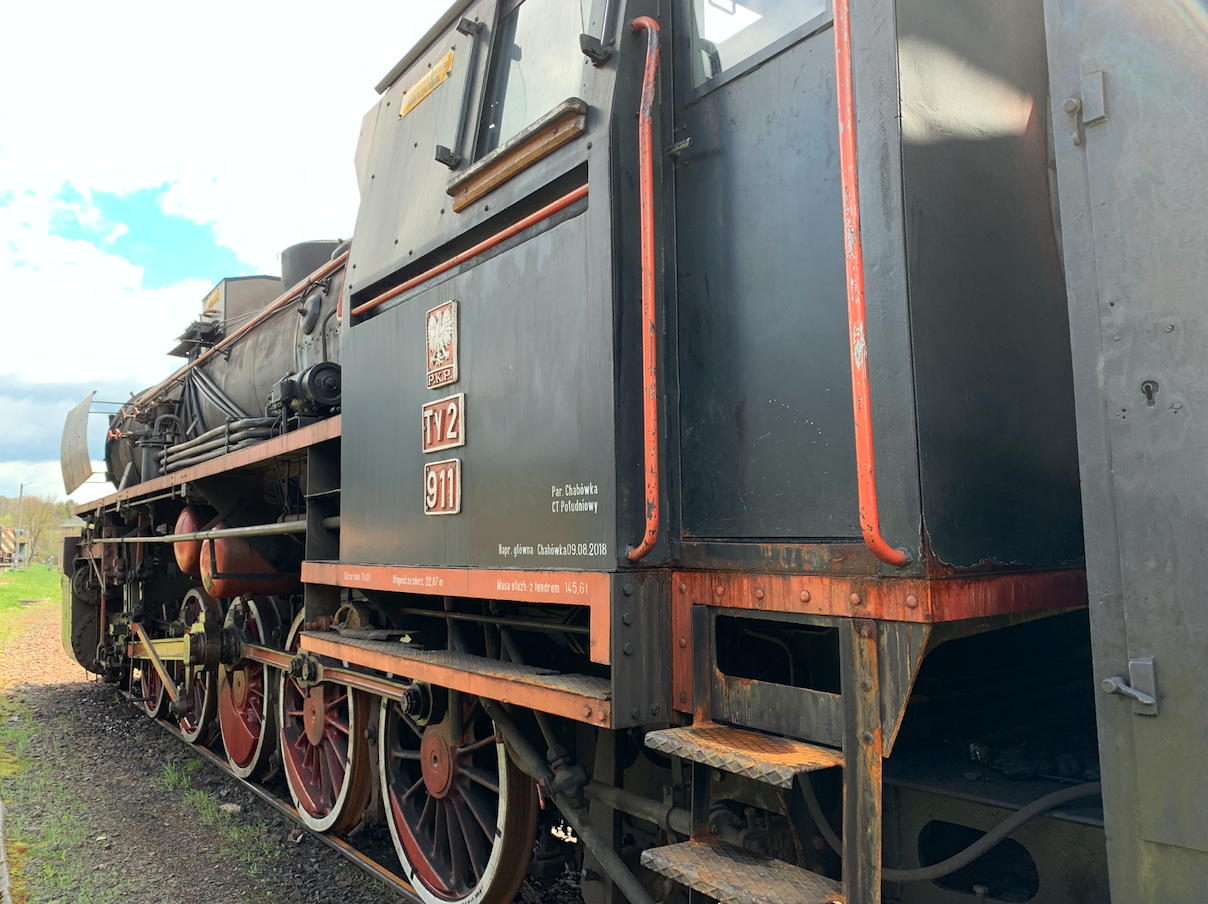

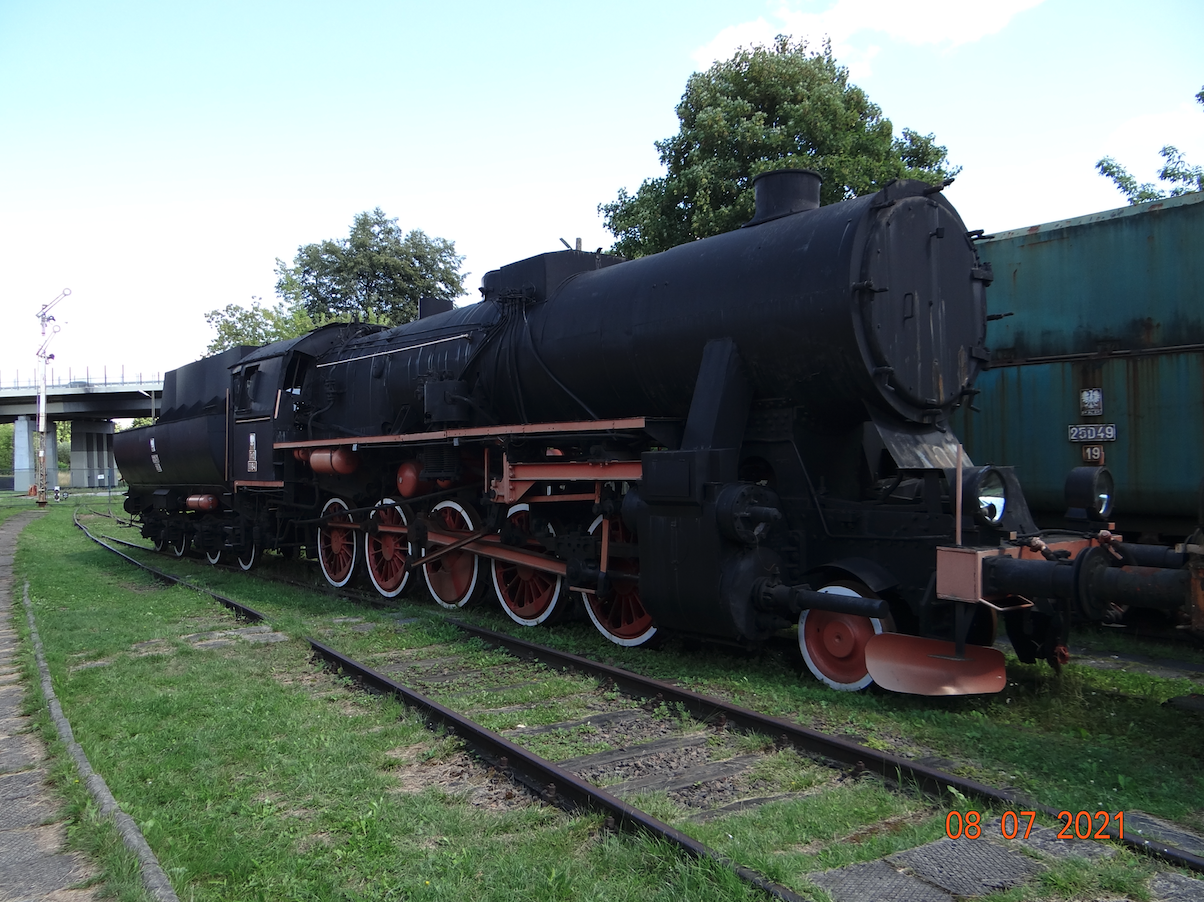
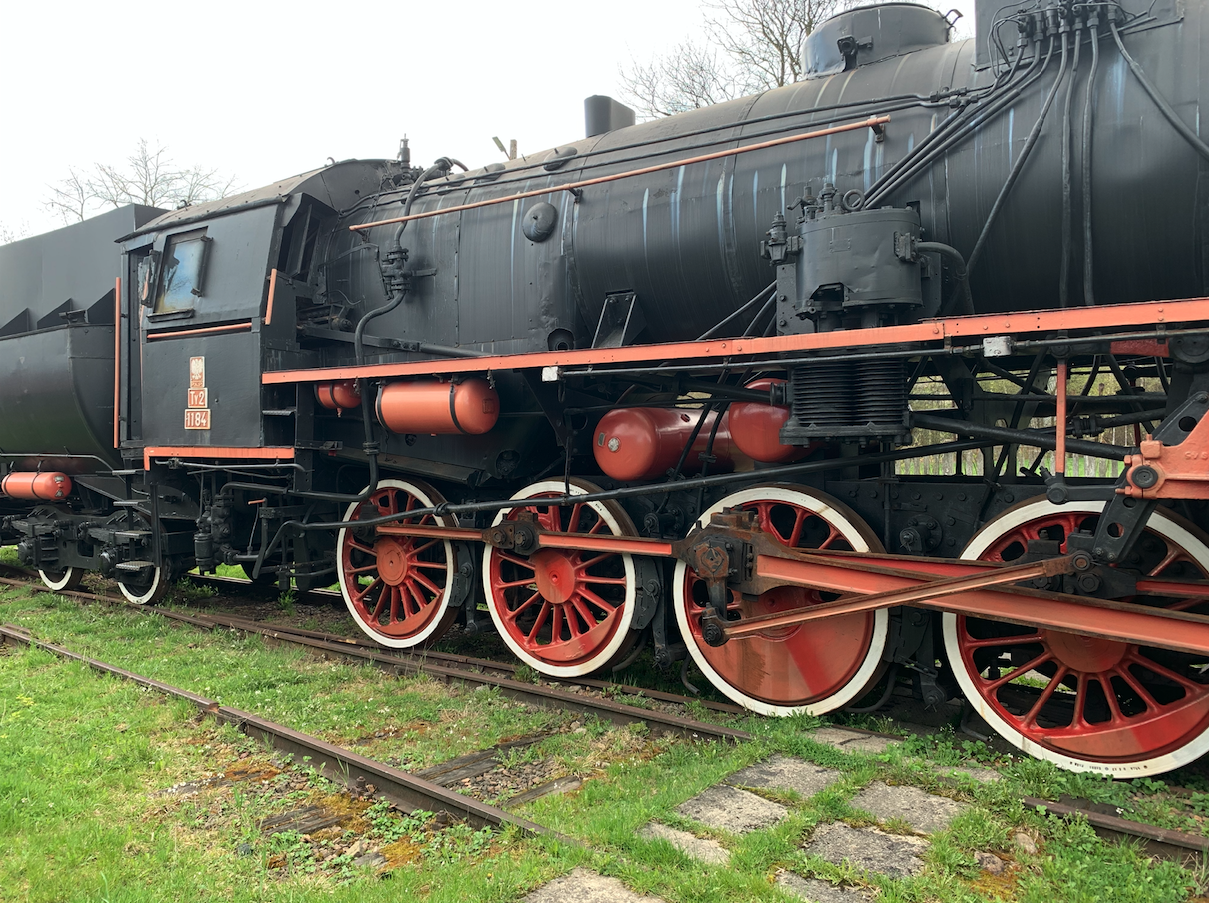
Since Joseph Stalin did not want to give oil to Adolf Hitler, there was an attack by Germany against the CCCP. As Russia lies on vast, poorly developed territories, the German railroad had to be well prepared for the war. The main supplies of the eastern front were laid on the railroad. It took thousands of locomotives and hundreds of thousands of carriages. In order to meet these needs, production plans had to be modified. Orders for the production of various locomotives have been suspended. It was only ordered to produce locomotives series 86 (TKt3), series 44 (Ty4) and series 50 (Ty5) in simplified versions.
Additionally, in January 1941, it was commissioned to develop, on the basis of the BR50 (Ty5) steam locomotive, a simple steam locomotive with the same performance. One axle was required to be under 15 tons. Poor tracks in the CCCP area were expected. The steam locomotive should run on a makeshift track. In addition, the construction of new machines was to allow material savings. The steam locomotive was to be built in a much shorter time than the existing structures. As Russian winters were terrified, the driver's booth was additionally insulated and heated. The design speed was 80 km / h.
In 1942, in Germany, all railway subjects were included in the armaments program, handed over to the Ministry of Armaments and Ammunition (Ministerium für Bewaffnung und Munition). In the period 1943-1944 it was planned to build 7,500 new locomotives.
The new locomotive BR52 (Ty2) was designed by the Borsig company and very quickly, in September 1942, the first locomotive No. 52 001 was put into service. This locomotive was used for propaganda purposes. The production of the BR52 (Ty2) locomotives was undertaken in 13 factories, including in occupied Poland: Krenau (Chrzanów), DWM (Poznań). A total of 6,161 locomotives were built.
BR52 locomotives with a tender with a condensing system.
For the BR52 (Ty2) locomotives, four- and five-axis condensation tenders were developed. The theoretical range of the steam locomotive with a condensation tender was 1000 km, while with a classic tender it was up to 150 km.
Condensation is a phenomenon that has been known for centuries. In railways, the first use of a steam locomotive with a condensation system was in the London Underground. The aim was to reduce smoke and fogging in order to improve visibility for the crew of the locomotive working in tunnels underground. The use of these locomotives was associated with technical problems. One of the problems was the poor discharge of hot steam. Therefore, after each course, the steam engine was refilled with cold water. In addition, hot steam had a negative effect on the operation of the injectors, which supplied the boiler with subsequent portions of water. During condensation, the chimney draft was significantly reduced, so additional blowers had to be used. When the metro's steam locomotives traveled on the surface, they operated without a condensation system. As early as 1905, Londoners abandoned condensation systems.
In the BR52 (Ty2) steam locomotive, the Germans took into account the lack of water and low temperatures in Russia. The four-axis Tender has been extended to house three large steam condensers with fans blowing cold air from outside (from the atmosphere). The advantage of the system was also the lack of a steam plume, which made the train more difficult to notice, for example by aerial reconnaissance. However, the RB52 steam locomotives with steam condensers were more complex and difficult to operate, and above all were less efficient.
After the Second World War, PKP received several BR52 locomotives with a steam condensation system, built by the HENSCHEL company. There was, for example, the Ty-2-11 steam locomotive, which operated in the "Piaskowa Railway" with a five-axle tender with a capacitor. There was, for example, the Ty2-12 steam locomotive, which was operated successively in Poznań Franowo (1947), Siedlce (1955), and Wolsztyn (1973). In 1977, the steam locomotive was removed from the state. Another was the Ty2-13 steam locomotive, which was operated successively in: Poznań Franowo (1947), Warsaw (1956), Ostrołęka (1968), Ełk (1970), Suwałki (1974), Małaszewicze (1979). The steam locomotive was deleted in 1986. All BR52 steam locomotives with condensation tenders, used in Poland since 1948, were operated with ordinary, barrel-shaped tenders, and the remaining steam condensation installation was dismantled.
BR52 (Ty2) after WWII.
During the Second World War, the BR52 locomotives were found almost all over Europe, but most of them were in Eastern Europe. Many of them had wide gauge wheels. At the end of the war, the locomotives were in various European countries. It is estimated that the CCCP took over approximately 500 - 1,500 BR52 locomotives, which were marked with the letters TE, while the serial numbers were retained. In the period 1962-1964, Russia sold about 220 TE52s from its stocks to Poland.
After the Second World War, Poland received 1,206 BR52 locomotives, which in Poland were designated Ty2 and new numbers. These locomotives were deployed in all Polish locomotives. Ty2 locomotives turned out to be very universal, easy to use and repair. They drove heavier trains than Ty4, the most powerful locomotives in Poland at that time. Ty2 steam locomotives ran fast and passenger trains. They worked on local and mountain routes, where it turned out that they did not contribute to the destruction of rails. Often times, the Ty2 even replaced the Pt47 steam locomotives. The Ty2 steam locomotive fired with better quality coal could haul freight trains weighing 620 tons at a speed of 80 km / h or 1,700 tons at a speed of 50 km / h. In 1960, 1,182 Ty2 locomotives were in operation in Poland. After the purchase of locomotives in the period 1962 - 1964, there were 1,406 units in total in Poland.
During the repairs of the Ty2 locomotive, they were unified and received Polish fittings, devices and other equipment. Original parts made in a simplified form were replaced with good quality Polish parts. This applies to, among others, safety valves in the cylinders, components of the driveline, and maneuvering levers. During the operation of the steam locomotives, tenders were changed, so you can find examples with various types of tenders (barrel and chest): 26D47, 30D43, 32D43, 32D47, 34D44.
Currently (2022), about 52 Ty2 steam locomotives remain in Poland, which are in various technical conditions. At least three are active and sometimes lit up.
T-T data of Ty2 steam locomotives:
Production in the period 1942 - 1945. Axis system 1'E. The own weight of the locomotive is 77 250 kg. Curb weight with tender 98,050 kg. Service weight 143 630 kg. The length of the locomotive is 13.60 kg. Total length 22.97 m. Height 4.44 m. Diameter of driving wheels 1.40 m. Diameter of rolling wheels 0.85 m. Pressure in the boiler 16 at. The heating area of the boiler is 177.73 m2. Superheater area 71.31 m2. Grate area of 3.90 m2. Design speed 80 km / h.
Written by Karol Placha Hetman
